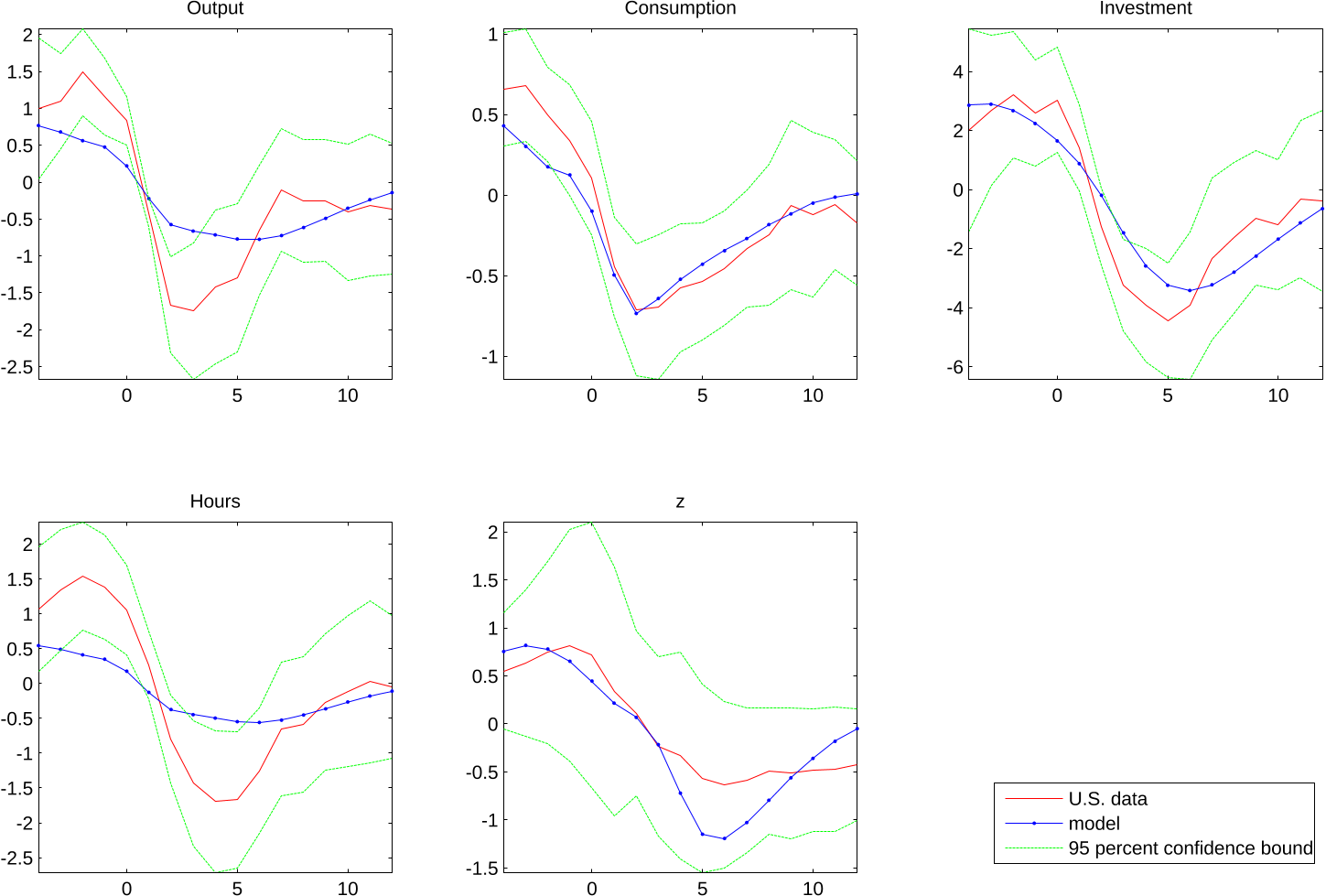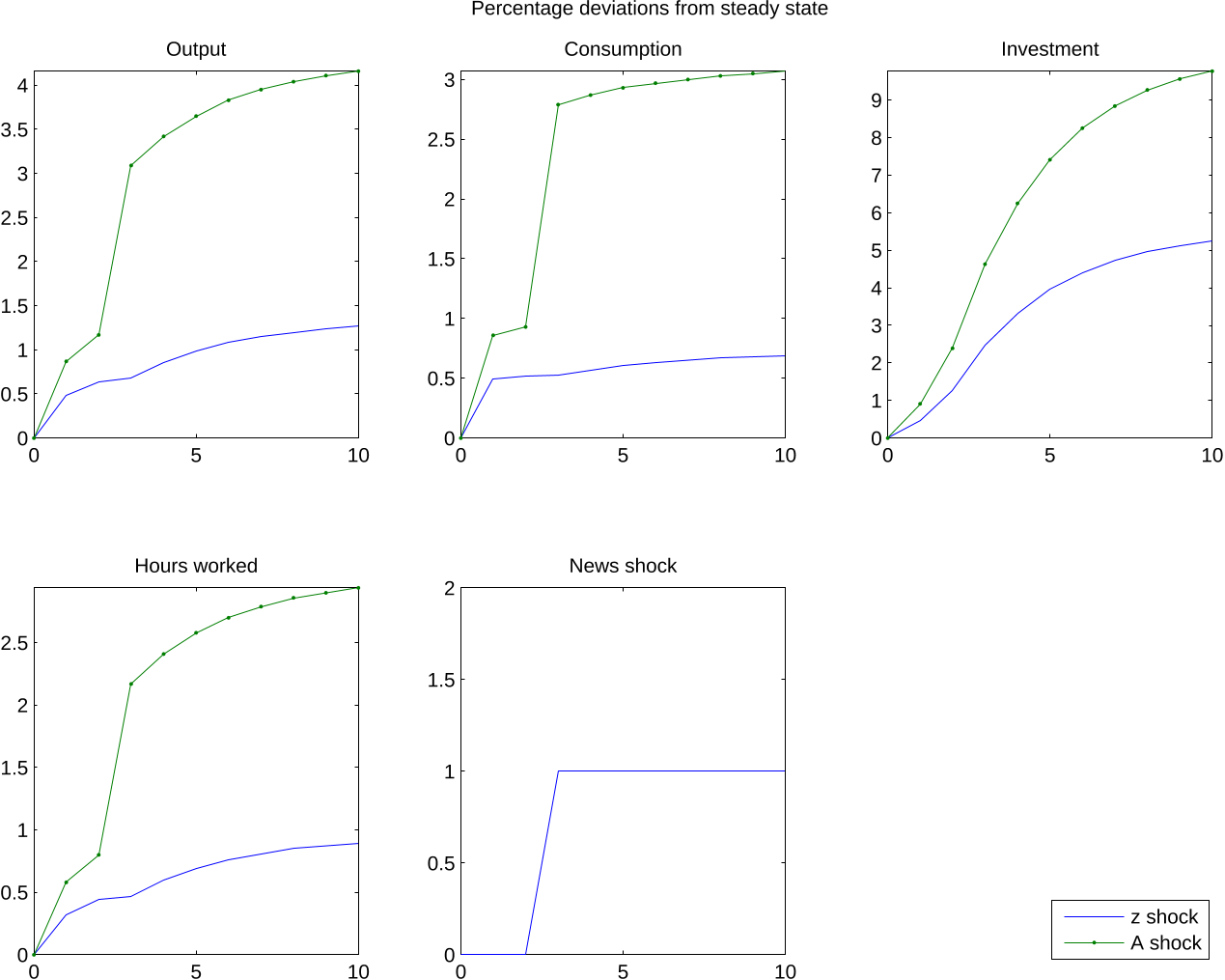
NBER WORKING PAPER SERIES
CAN NEWS ABOUT THE FUTURE DRIVE THE BUSINESS CYCLE?
Nir Jaimovich
Sergio Rebelo
Working Paper 12537
http://www.nber.org/papers/w12537
NATIONAL BUREAU OF ECONOMIC RESEARCH
1050 Massachusetts Avenue
Cambridge, MA 02138
September 2006
We thank the editor, Mark Gertler, three anonymous referees, and Gadi Barlevy, Paul Beaudry, Larry
Christiano, Fabrice Collard, Wouter Denhaan, Martin Eichenbaum, Zvi Hercowitz, Erin Hoge, Navin
Kartik, Benjamin Malin, Franck Portier, and Laura Veldkamp for their comments. The views expressed
herein are those of the author(s) and do not necessarily reflect the views of the National Bureau of
Economic Research.
© 2006 by Nir Jaimovich and Sergio Rebelo. All rights reserved. Short sections of text, not to exceed
two paragraphs, may be quoted without explicit permission provided that full credit, including © notice,
is given to the source.

Can News About the Future Drive the Business Cycle?
Nir Jaimovich and Sergio Rebelo
NBER Working Paper No. 12537
September 2006, April 2008
JEL No. E24,E32
ABSTRACT
Aggregate and sectoral comovement are central features of business cycle data. Therefore, the ability
to generate comovement is a natural litmus test for macroeconomic models. But it is a test that most
existing models fail. In this paper we propose a unified model that generates both aggregate and sectoral
comovement in response to contemporaneous shocks and news shocks about fundamentals. The fundamentals
that we consider are aggregate and sectoral TFP shocks as well as investment-specific technical change.
The model has three key elements: variable capital utilization, adjustment costs to investment, and
a new form of preferences that allow us to parameterize the strength of short-run wealth effects on
the labor supply.
Nir Jaimovich
Department of Economics
579 Serra Mall
Stanford University
Stanford, CA 94305-6072
and NBER
njaimo@stanford.edu
Sergio Rebelo
Northwestern University
Kellogg School of Management
Department of Finance
Leverone Hall
Evanston, IL 60208-2001
and NBER
s-rebelo@northwestern.edu

1. Introduction
Business cycle data feature two important forms of comovement. The …rst is aggregate
comovement: major macroeconomic aggregates, such as output, consumption, investment,
hours worked, and the real wage tend to rise and fall together. The second is sectoral
comovement: output, employment, and investment tend to rise and fall together in di¤erent
sectors of the economy.
Lucas (1977) argues that these comovement properties re‡ect the central role that ag-
gregate shocks play in driving business ‡uctuations. However, it is surprisingly di¢ cult
to generate both aggregate and sectoral comovement, even in models driven by aggregate
shocks. Barro and King (1984) show that the one-sector growth model generates aggregate
comovement only in the presence of contemporaneous shocks to total factor productivity
(TFP). Other shocks generate a negative correlation between consumption and hours worked.
Christiano and Fitzgerald (1998) show that a two-sector version of the neoclassical model
driven by aggregate, contemporaneous TFP shocks does not generate sectoral comovement
of investment and hours worked.
In this paper we propose a model that generates aggregate and sectoral comovement in
response to both aggregate and sectoral shocks. The shocks that we consider are aggregate
TFP shocks, investment-sp eci…c shocks, and sectoral TFP shocks to the consumption and
investment sectors. We consider both contemporaneous shocks and news shocks. News
shocks consist of information that is useful for predicting future fundamentals but does not
a¤ect current fundamentals.
The early literature on business cycles (e.g. Beveridge (1909), Pigou (1927), and Clark
(1934)) emphasizes news shocks as potentially important drivers of business cycles. The idea
is that news shocks change agents’ expectations about the future, a¤ecting their current
investment, consumption, and work decisions. There is a revival of interest in this idea,
motivated in part by the U.S. investment boom of the late 1990s and the subsequent economic
slowdown. Figure 1 displays some suggestive data for this episode. The …rst panel shows data
obtained from the Institutional Brokers Estimate System on the median analyst forecast of
the value-weighted long-run growth rate of earnings for companies in the Standard & Poors
500 index. The second panel shows the level of investment and realized earnings for the
same companies. We see that after 1995 the expected annual earnings growth rate rises
1

rapidly, from roughly 11:5 percent to 17:7 in 2001.
1
Investment and earnings forecasts are
positively correlated, whereas investment and realized earnings are negatively correlated.
2
One plausible interpretation of these data is that high expectations about earnings growth
driven by the prospects of new technologies lead to high levels of investment and to an
economic boom. When the new technologies fail to live up to what was expected, investment
falls, and a recession ensues.
It is surprisingly di¢ cult to make this story work in a standard business cycle model.
Cochrane (1994), Danthine, Donaldson, and Johnsen (1998), and Beaudry and Portier (2004,
2008) …nd that many variants of the neoclassical growth model fail to generate a boom in
response to expectations of higher future total factor productivity (TFP). Good news about
future productivity make agents wealthier, so they increase their consumption, as well as
their leisure, reducing the labor supply. This fall in labor supply causes output to fall.
Therefore, good news about tomorrow generates a recession today!
Our model introduces three elements into the neoclassical growth model that together
generate comovement in response to news shocks. These same elements generate comove-
ment in response to contemporaneous shocks. The …rst element, variable capital utilization,
increases the response of output to news about the future. The second element, adjustment
costs to investment, gives agents an incentive to resp ond immediately to news about future
fundamentals.
3
The third element, a weak short-run wealth e¤ect on the labor supply, helps
generate a rise in hours worked in response to positive news. We introduce this element by
using a new class of preferences which gives us the ability to parameterize the strength of
the short-run wealth e¤ect on the labor supply. These preferences nest, as special cases, the
two classes of utility functions most widely used in the business cycle literature, those char-
acterized in King, Plosser, and Rebelo (1988) and in Greenwood, Hercowitz, and Hu¤man
(1988).
In our quantitative work, we consider a one-sector and a two-sector version of our model.
The latter is used to study sectoral comovement. Using our preferences to vary the strength
1
The realized average annual earnings growth rate is 10 percent for the 1985-95 period and 11 percent
for the 1995-2000 period.
2
The correlation between investment and earnings growth forecasts is 0:48 for the whole sample and 0:72
for the 1995-2004 period. Earnings forecasts lead investment; the correlation between the earnings forecast
at time t and investment at time t + 1 is 0:52 for the full sample. The correlation between investment and
realized earnings is 0:40 for the whole sample and 0:57 for the 1995-2004 period.
3
The …rst two elements, variable capital utilization and adjustment costs to investment, are generally nec-
essary to generate comovement in response to contemporaneous investment-speci…c shocks, see Greenwood,
Hercowitz, and Krusell (2000).
2

of short-run wealth e¤ects on the labor supply we …nd that these e¤ects lie at the heart
of the model’s ability to generate comovement. We can generate aggregate comovement in
the presence of moderate labor-supply wealth e¤ects. However, low short-run labor-supply
wealth e¤ects are essential to generate sectoral comovement that is robust to the timing and
nature of the shocks.
4
Our work is related to several recent papers on the role of news and expectations as
drivers of business cycles. Beaudry and Portier (2004) propose the …rst model that produces
an expansion in response to news. Their model features two complementary consumption
goods, one durable and one non-durable. Both goods are produced with labor and a …xed
factor but with no physical capital. The model generates a boom in response to good news
about TFP in the non-durable goo ds sector. Christiano, Ilut, Motto, and Rostagno (2007)
show that habit persistence and investment adjustment costs pro duce aggregate comovement
in response to news about a future TFP shock. In their model, intertemporal substitution in
the supply of labor is large enough to comp ensate for the negative wealth e¤ect of the news
shock on the labor supply. However, hours worked fall when the shock materializes because
there continues to be a negative wealth e¤ect on labor supply, but there is no longer a strong
intertemporal substitution e¤ect on labor supply. Denhaan and Kaltenbrunner (2005) study
the e¤ects of news in a matching model. Matching frictions are a form of labor adjustment
costs, so their model is related to the version of our model with adjustment costs to labor,
which we discuss in section 4. Lorenzoni (2005) studies a model in which productivity has
a temporary and a permanent component and agents have imperfect information about the
relative importance of these two components. Blanchard (2007) emphasizes the importance
of news about future fundamentals in an open economy setting.
Our paper is organized as follows. In Section 2 we propose a one-sector model that gener-
ates aggregate comovement with respect to news about TFP and investment-sp eci…c shocks.
In Section 3 we explore the role that capital utilization, adjustment costs, and preferences
play in these results. In Section 4 we present a two-sector model that generates sectoral
comovement with respect to both contemporaneous and news shocks to fundamentals. The
fundamentals that we consider are aggregate TFP shocks and sectoral TFP shocks to con-
sumption and investment. In Section 5 we study simulations of a version of our one-sector
4
Imbens, Rubin, and Sacerdote (1999) provide microeconomic evidence that is consistent with the view
that short-run wealth e¤ects on the labor supply are weak. Their evidence is based on a sample of lottery
prize winn ers. They …nd that prizes of $15,000 per year for twenty years have no e¤ect on the labor supply.
3





